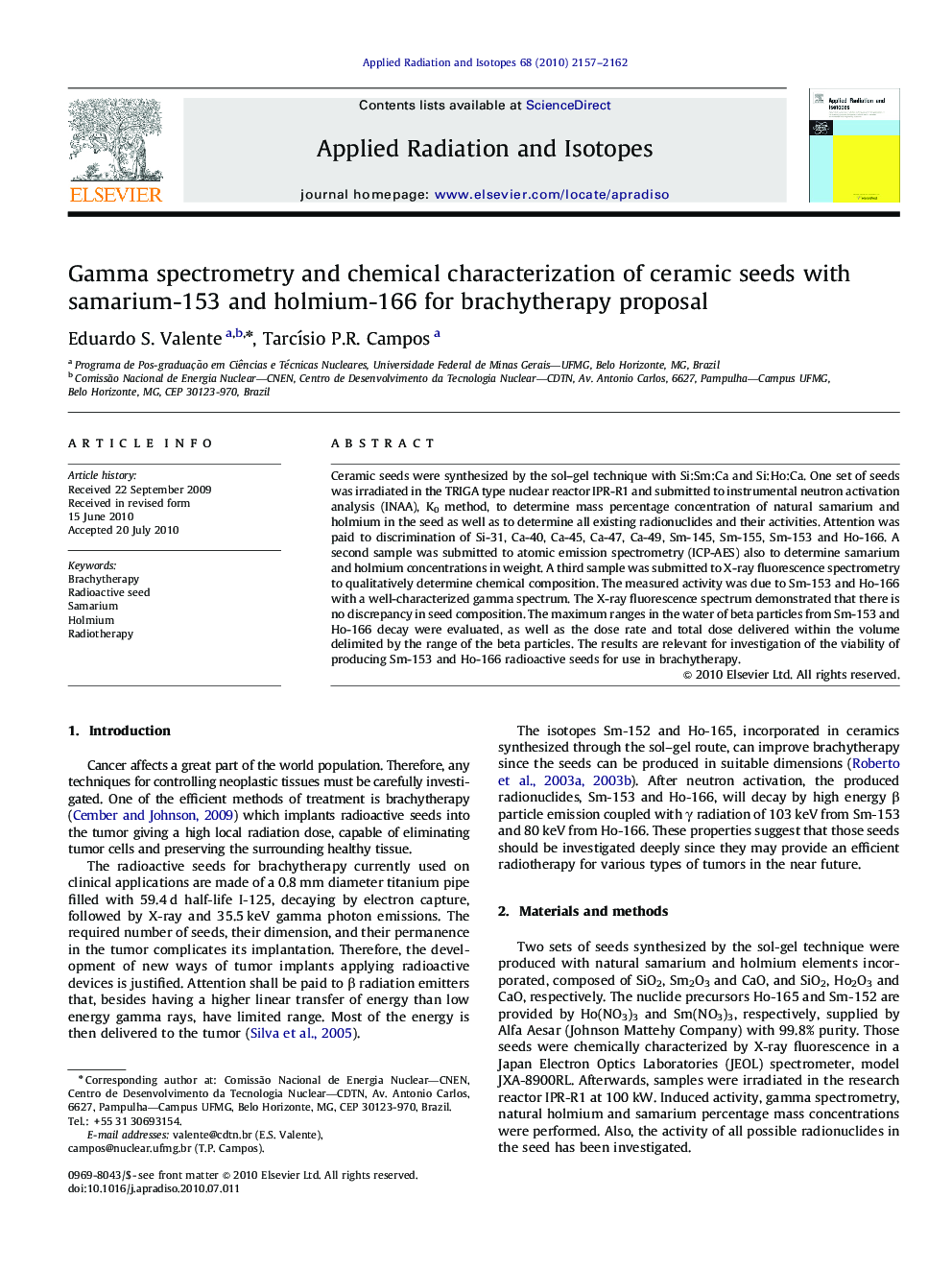| Article ID | Journal | Published Year | Pages | File Type |
|---|---|---|---|---|
| 1877898 | Applied Radiation and Isotopes | 2010 | 6 Pages |
Ceramic seeds were synthesized by the sol–gel technique with Si:Sm:Ca and Si:Ho:Ca. One set of seeds was irradiated in the TRIGA type nuclear reactor IPR-R1 and submitted to instrumental neutron activation analysis (INAA), K0 method, to determine mass percentage concentration of natural samarium and holmium in the seed as well as to determine all existing radionuclides and their activities. Attention was paid to discrimination of Si-31, Ca-40, Ca-45, Ca-47, Ca-49, Sm-145, Sm-155, Sm-153 and Ho-166. A second sample was submitted to atomic emission spectrometry (ICP-AES) also to determine samarium and holmium concentrations in weight. A third sample was submitted to X-ray fluorescence spectrometry to qualitatively determine chemical composition. The measured activity was due to Sm-153 and Ho-166 with a well-characterized gamma spectrum. The X-ray fluorescence spectrum demonstrated that there is no discrepancy in seed composition. The maximum ranges in the water of beta particles from Sm-153 and Ho-166 decay were evaluated, as well as the dose rate and total dose delivered within the volume delimited by the range of the beta particles. The results are relevant for investigation of the viability of producing Sm-153 and Ho-166 radioactive seeds for use in brachytherapy.
